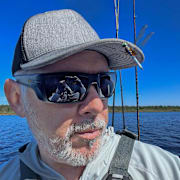Minnesota DNR Considering Lower Daily Walleye Limit. Resort Owners and Citizens Advisory Group Voice Concerns

The Minnesota Department of Natural Resources (DNR) is proposing to lower the daily walleye limit from six to four statewide, beginning in 2026. The current six-walleye limit has been in place since 1956, but as environmental changes like climate, invasive species, and increasing fishing pressures impact walleye populations, DNR officials believe proactive measures are necessary to ensure the sustainability of Minnesota's state fish.
Brad Parsons, the head of Minnesota DNR Fisheries, stated that while there is no immediate "walleye crisis," conditions grow increasingly challenging for maintaining healthy walleye populations. Shifting habitat dynamics favor other species over walleye. Additionally, advancements in fishing technology have made anglers more effective, contributing to increased pressure on fish populations. The proposed limit reduction is intended to protect walleye stocks while allowing the fish to thrive under these evolving conditions.
The rule-change process will include a public comment period, offering stakeholders a chance to voice their opinions. However, the proposal has already sparked debate. Members of the DNR's citizens advisory walleye group have voiced concerns, claiming that the scientific justification for the reduction is insufficient. Some argue that a lower daily limit would restrict angling opportunities without substantial evidence of declining populations.
Lake resort owners have also expressed concerns about the potential impact on tourism, noting that many visitors only get limited fishing opportunities each year and often appreciate the flexibility of a higher limit. The DNR maintains that this measure is part of a long-term, broader, precautionary approach to sustainable fish management, and is consistent with special walleye management strategies already in place on high-traffic lakes like Mille Lacs and Upper Red Lake.
If implemented, the four-walleye daily limit and corresponding possession limit would streamline regulations statewide, ensuring consistency across Minnesota’s lakes. DNR Commissioner Sarah Strommen supports the proposal, emphasizing that the change aligns with broader conservation goals aimed at adapting to a changing ecosystem.
